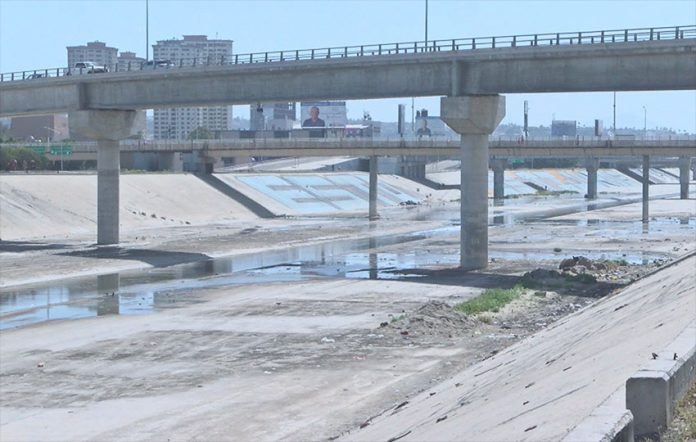Mexico and the United States will together invest almost US $500 million in a range of sewage treatment projects designed to clean up the heavily polluted Tijuana River, which flows into the Pacific Ocean just north of the border in San Diego County.
At a ceremony held earlier this month at the Tijuana River National Estuarine Research Reserve in Imperial Beach, California, Mexican and U.S. officials signed an agreement that commits to funding 17 priority projects. The International Boundary and Water Commission pact pledges almost $144 million in Mexican funding and at least $330 million in U.S. spending for a total outlay of approximately $474 million.
The Ministry of Foreign Affairs (SE) said the San Antonio de los Buenos wastewater treatment plant in Tijuana will undergo a complete renovation while the South Bay International Wastewater Treatment Plant just north of the border in San Ysidro will be expanded in order to double its current capacity. SE also said that pumping stations and other water and sewage infrastructure on the Mexican side will be upgraded.
“With this important agreement, the governments of Mexico and the United States commit to working together on the planning, design, [re]construction and rehabilitation of existing wastewater infrastructure in the region of Tijuana, Baja California, and San Diego, California, including the Pacific Ocean,” the ministry said.
“The new infrastructure will provide for the conveyance, treatment, disposal and when applicable reuse of wastewater to reduce contamination in the Tijuana River basin.”
According to the United States Environmental Protection Agency (EPA), the planned projects will increase sewage treatment capacity by 43 million gallons – or 162.7 million liters – per day. The overhaul of the Tijuana wastewater treatment plant is slated to be finished by 2027, and will reduce the quantity of untreated sewage discharged to the Pacific Ocean by 80%, the EPA said.
Scott Peters, a U.S. congressman who represents San Diego, expressed optimism that the overhaul of the Tijuana plant will be finished sooner than 2027.
The pollution of the Tijuana River and the Pacific Ocean off the coast of both northern Baja California and southern California has been a problem for decades, but has worsened in recent years as pressure on the sewage system continued to grow. Binational environment group Wildcoast said in 2018 that the Tijuana wastewater treatment plant was dumping 1,750 liters of untreated sewage into the Pacific Ocean per second.

Raw sewage, chemicals and trash discarded in the Tijuana River in Mexico usually end up at Imperial Beach, where the waterway flows into the Pacific Ocean. Scores of U.S. border patrol agents reportedly became ill in 2017 after being exposed to contaminants while working in the vicinity of the border. Pollution of the coastline in southern California has forced the closure of beaches on numerous occasions.
Peters described sewage infrastructure in Tijuana as “really decrepit,” asserting that it lacked maintenance.
“The treatment plant is falling apart, so sewage is falling into the water — not through a pipe with partial treatment, but without any treatment,” he said. “They have a double problem — growing population and failing infrastructure,” the lawmaker added.
Baja California Governor Marina del Pilar said last week that the new funding agreement showed that governments on both sides of the border are committed to solving the longstanding pollution problem. “We’re taking a historic step that will transform the life and environment of our region,” she said.
With reports from The San Diego Union-Tribune, Agencia Informativa de México and Noro
